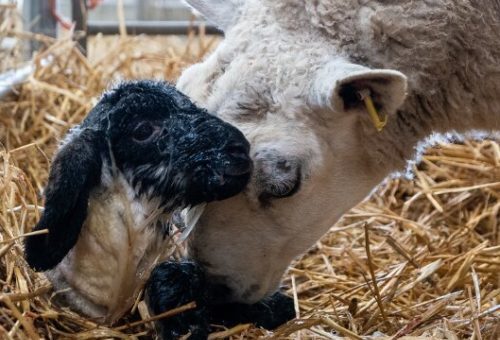Planning for Lambing Amidst Iodine Shortage
11 January 2023
There is a risk of reduced availability of strong (10%) iodine for navel dressing this spring due to production ceasing at the main source in Chile. For farmers able to source iodine ahead of lambing it is likely to be at a higher cost, as much as quadruple.
Lower iodine concentrations (often quoted as below 7%) are considered to be less effective in drying and disinfecting the navel.
Navel dressing is important however most cases of joint ill and other bacteraemic conditions follow inadequate colostrum intake and or a contaminated environment.
The most important things farmers can do to avoid these conditions is therefore to ensure an adequate supply of quality colostrum and decrease the environmental challenge of pathogens by:
- Managing ewe body condition and nutrition to ensure ewes have plenty good quality colostrum.
- Consider forage analysis and metabolic profiling in later pregnancy.
- Ensure ewes are supplied with sufficient energy in the last six weeks of pregnancy and sufficient protein for the last few weeks for colostrum.
- Ensuring a high quality and quantity of clean colostrum intake in the first hours of life.
- Providing a clean and dry lambing environment. Ensuring individual pens are well bedded, disinfected and rebedded between ewes.
Do not use tetracycline antibiotic sprays for treating the navels of neonatal animals – they do not dry them very effectively and it is an unnecessary use of antibiotics. Antibiotics should be used when needed not as planned blanket usage.
Alternative navel dressings
Navel dressing can help reduce some risk and there are proprietary alternatives to iodine on the market. However there is little or no data available on their use in lambs, and limited data available in calves.
Alternatives include:
- Vetericyn Super 7 Plus spray/dip – sodium hydroxide and alcohol in electrolysed water (which produces sodium hydroxide), with sodium bicarbonate. Small study showing reduced navel drying time in calves compared with 7% iodine tincture with no increase in infections
- Repiderma spray – chelated copper sulphate, zinc chloride and alcohol in butane. Small study showing no significant difference in navel drying time or signs of navel infection compared with 4% iodine
- 4% chlorhexidine, or a 50/50 mix 4% chlorhexidine and alcohol – there are limited studies reporting equivalence with 7% iodine
- Other products:
- 70% alcohol (dries the navel but antibacterial effects are short lasting)
- Copper sulphate solution (may not dry as effectively, precautions required to avoid contact with skin, eyes and clothing).
It is important to scrutinise the safety datasheet for whatever product is used, including the requirements for disposal.
Related FAS Materials
https://www.fas.scot/article/lambing-time-checklist/
https://www.fas.scot/downloads/lambing-information-sheet-disinfectants-at-lambing-time/
https://www.fas.scot/downloads/lambing-information-sheet-lambing-shed-hygiene/
https://www.fas.scot/downloads/lambing-information-sheet-be-prepared-for-lambing/
Sign up to the FAS newsletter
Receive updates on news, events and publications from Scotland’s Farm Advisory Service
